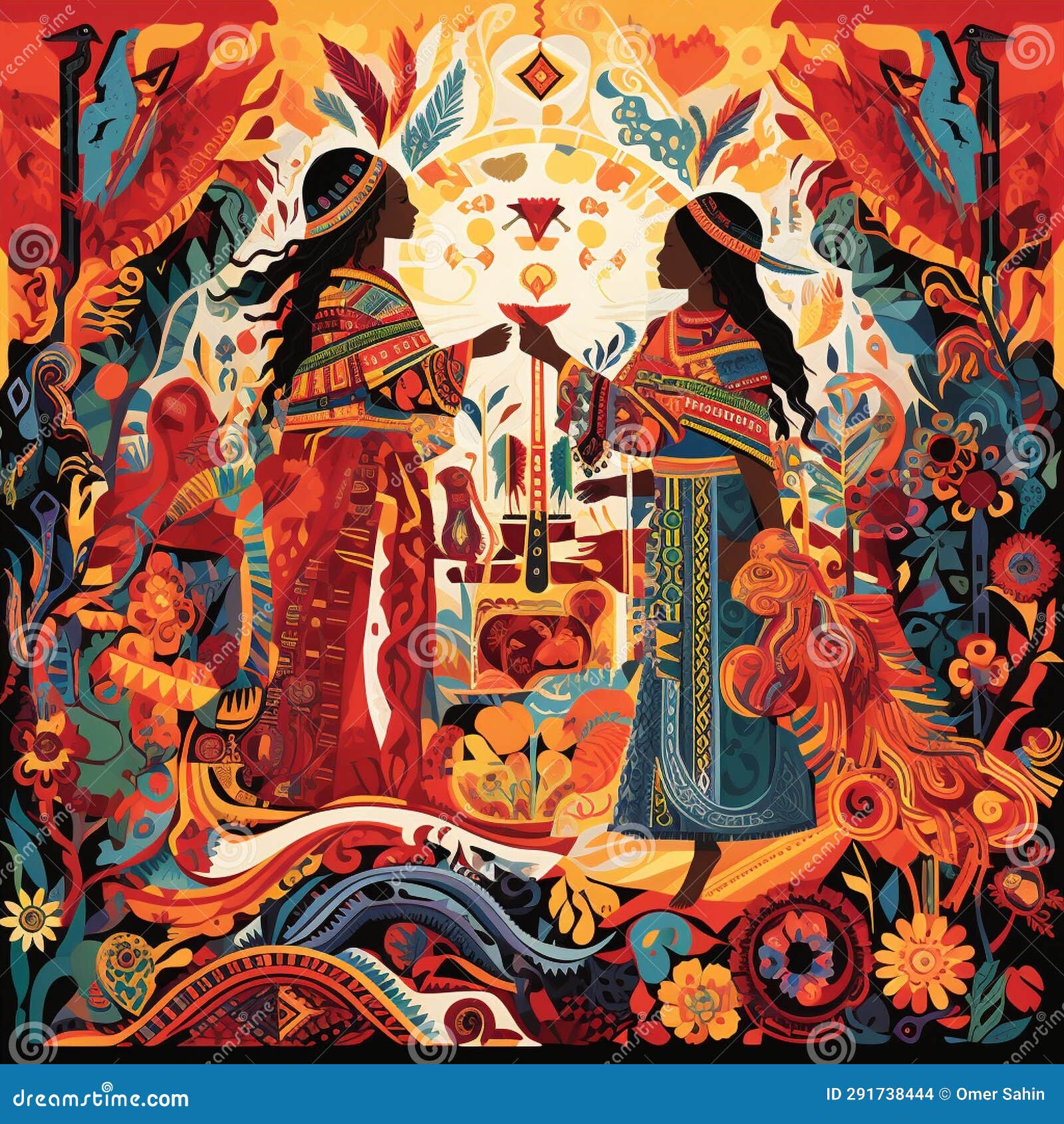A Tapestry of Traditions: Exploring the Rich Culture of Central America
A Tapestry of Traditions: Exploring the Rich Culture of Central America

Central America, a vibrant region nestled between Mexico and South America, is a melting pot of indigenous, European, and African influences. This unique blend has given birth to a rich and diverse cultural landscape, brimming with traditions, customs, and artistic expressions. From the ancient Mayan ruins of Guatemala to the vibrant festivals of Panama, Central America offers a captivating journey through time and history.
The Legacy of Indigenous Cultures
Related Articles: A Tapestry of Traditions: Exploring the Rich Culture of Central America
- Unveiling The Wealth: Top 5 Richest Native American Tribes In The United States
- Unveiling The Richest Tribe In America: A Journey Through Wealth, History, And Sovereignty
- The Allure Of Blue Eyes In India: A Journey Through History, Genetics, And Culture
- The Agua Caliente Band Of Cahuilla Indians: A Tribe Thriving On Innovation And Tradition
- The Mdewakanton Sioux: A Legacy Of Resilience And Renewal
The indigenous peoples of Central America, including the Maya, Aztec, and Olmec civilizations, have left an indelible mark on the region’s cultural identity. Their ancient traditions, beliefs, and artistic expressions continue to resonate today, shaping everything from language and cuisine to music and dance.
Mayan Heritage: The Maya, known for their advanced civilization and intricate calendar system, left behind a legacy of architectural marvels like Tikal in Guatemala and Chichén Itzá in Mexico. Their intricate weaving techniques, pottery, and jade carvings are still admired today.
Pre-Columbian Art: Central America is a treasure trove of pre-Columbian art, reflecting the diverse artistic expressions of its indigenous peoples. From the intricate jade mosaics of the Olmec to the ceramic figures of the Maya, these artifacts offer a glimpse into the rich artistic heritage of the region.
The Spanish Influence
The arrival of the Spanish in the 16th century had a profound impact on Central American culture. The Spanish language, religion, and customs became deeply ingrained in the region’s fabric.
Religion: Catholicism is the dominant religion in Central America, a legacy of Spanish colonization. Churches and cathedrals are integral parts of the region’s landscape, and religious festivals and processions are vibrant expressions of faith.
Spanish Language: Spanish is the official language of all Central American countries, although many indigenous languages continue to be spoken. The Spanish spoken in Central America has its own unique dialect and vocabulary, influenced by local indigenous languages.
Music and Dance: Spanish influence is evident in Central American music and dance, with traditional genres like mariachi, salsa, and cumbia gaining popularity. These vibrant rhythms and energetic dances are often performed at festivals and celebrations.

African Influence: The transatlantic slave trade brought African culture to Central America, contributing to the region’s rich tapestry of traditions.
Music and Dance: Afro-Caribbean rhythms, like reggae and calypso, are popular in Central American countries like Panama and Costa Rica. Traditional African instruments, like the drum and the marimba, are used in many musical genres.
Cuisine: African influences are evident in Central American cuisine, particularly in the use of spices and cooking techniques. Dishes like rice and beans, stews, and seafood are often prepared with African-inspired flavors.
A Tapestry of Diversity
Central America is a region of vibrant diversity, where indigenous, European, and African influences have blended to create a unique cultural landscape. Each country has its own distinct traditions and customs, adding to the region’s rich tapestry.

Guatemala: Known for its Mayan heritage, Guatemala is home to colorful markets, vibrant textiles, and ancient ruins. The country’s indigenous communities continue to preserve their traditions, from their intricate weaving techniques to their traditional dress.
Belize: Belize, a former British colony, boasts a unique blend of Caribbean and Mayan influences. The country is known for its beautiful beaches, diverse wildlife, and vibrant Creole culture.
Honduras: Honduras is a country rich in indigenous traditions, with a strong focus on community and family. The country’s vibrant folklore is evident in its music, dance, and storytelling.
El Salvador: El Salvador is known for its coffee plantations, its strong Catholic faith, and its vibrant street food culture. The country’s cuisine is a blend of indigenous and Spanish influences, with dishes like pupusas and tamales being popular favorites.
Nicaragua: Nicaragua is a country of natural beauty, with volcanoes, lakes, and beaches. The country’s indigenous communities continue to play a significant role in its cultural landscape, with traditions like the annual Sandino Festival celebrating the country’s history.

Costa Rica: Costa Rica is known for its lush rainforests, stunning beaches, and "Pura Vida" lifestyle. The country’s cultural identity is shaped by its indigenous heritage, its strong environmental consciousness, and its welcoming spirit.
Panama: Panama is a country of contrasts, with a modern capital city and a rich indigenous heritage. The country’s vibrant culture is evident in its music, dance, and festivals, like the annual Carnival celebration.
Celebrating Cultural Diversity
Central America’s rich cultural heritage is a testament to the region’s resilience and adaptability. The blend of indigenous, European, and African influences has created a vibrant tapestry of traditions, customs, and artistic expressions. From the ancient ruins of the Maya to the modern-day celebrations of Carnival, Central America offers a unique and unforgettable cultural journey.
FAQ about Culture of Central America
Q: What are the main influences on Central American culture?
A: Central American culture is a blend of indigenous, European (mainly Spanish), and African influences.
Q: What are some of the most important indigenous cultures in Central America?
A: The Maya, Aztec, and Olmec are some of the most prominent indigenous cultures in Central America.
Q: How has Spanish colonization impacted Central American culture?
A: Spanish colonization brought the Spanish language, Catholicism, and many cultural practices to Central America.
Q: What are some of the most popular traditional music and dance genres in Central America?
A: Mariachi, salsa, cumbia, reggae, and calypso are some of the most popular music and dance genres in Central America.
Q: How is African culture reflected in Central American culture?
A: African influence is evident in Central American music, dance, cuisine, and language.
Q: What are some of the unique cultural traditions of each Central American country?
A: Each Central American country has its own unique cultural traditions, from the Mayan heritage of Guatemala to the vibrant Carnival celebration in Panama.
Q: How can visitors experience Central American culture?
A: Visitors can experience Central American culture by attending festivals, visiting museums, exploring ancient ruins, trying local cuisine, and interacting with locals.
Q: What are some of the challenges facing Central American culture?
A: Challenges include the preservation of indigenous languages and traditions, the impact of globalization, and the need for cultural understanding and tolerance.
Q: Why is it important to understand Central American culture?
A: Understanding Central American culture helps us appreciate the region’s diversity, its rich history, and its unique contributions to the world. It also fosters cultural understanding and tolerance, promoting peace and cooperation.

Closure
Thus, we hope this article has provided valuable insights into A Tapestry of Traditions: Exploring the Rich Culture of Central America. We hope you find this article informative and beneficial. See you in our next article!


